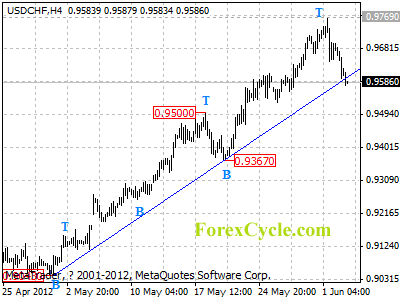The financial system wasn’t fixed after 2008, and it won’t be fixed anytime soon.
The unexpected $2 billion – or is it $5 billion? – loss incurred by JPMorgan Chase (NYSE:JPM) “whale” trader Bruno Iksil shows only too clearly the flaws in Dodd-Frank and other regulatory activity.
Big banks are still taking risks they simply don’t understand. Worse, there’s no reason to believe the regulators understand them, either.
While the banks do employ “quant” mathematicians to analyze risk, the problem is the quants are also paid to help maximize the profits from the banks’ trading desks.
Not only is this a bit of a conflict, but they are working off a market model that has failed repeatedly in the past.
It’s a dangerous mix for investors and taxpayers alike.
The Failed Trade at JPMorgan
JPM’s trade that failed had been to build up a major bullish position on corporate debt defaults – in other words, betting there wouldn’t be many of them.
In a sensible financial system JPM would do this simply by going out and lending lots of money to corporations, or by buying their bonds.
However, according to The Wall Street Journal, in the magical fun palace of today’s trading room, JPM achieved this instead by buying an obscure credit derivatives index known as CDX.NA.IG.9.
The key is that this is a “mature” index. Conceived of 10 years ago, the index JPM bought only had 5 years of life remaining.
In other words, not only did JPM use this foolish roundabout as a way to take a position on credit, but it did so through an old index, which could be expected to be less liquid than a newer index that attracted the most trading volume.
Then sharks began to circle.
Naturally, hedge funds spotted the unusual trading patterns and price anomalies in CDX.NA.IG.9, and piled in to take advantage of JPM’s eventual need to unwind these trades.
That’s one of the problems with trading that is distinct from a long-term investment; eventually you have to unwind the position.
Whereas you can hold a bond to maturity and a stock forever, collecting dividends, instruments such as credit default swaps, let alone indexes on credit default swaps, have to be sold as well as bought.
JPM’s loss on this position was originally estimated at $2 billion, but is now admitted to have the potential to rise to $5 billion or more.
You can expect all of the hedge funds that bought contrary positions will extract their “pound of flesh” in the unwinding process.
Perhaps the most disquieting aspect of this fiasco is that no laws appear to have been broken.
It was not a case of a “rogue trader” hiding his positions from the risk management system. The risk management system simply failed altogether.
JPMorgan’s Risk Management
There appear to have been two problems with JPM’s risk management.
First, it assumed that two quite different instruments “hedged” each other, so that large balancing positions could be taken out on both without great risk.
Second, it relied on the obsolete and theoretically unsound “Value at Risk” (VaR) metric to measure its overall exposure.
VaR was already discredited by its complete failure to control risk in the 2008 collapse, when securitized mortgage debts behaved completely differently from what the model predicted.
As early as August 2007, Goldman Sachs CFO David Viniar said the market was experiencing “25-standard-deviation days” one after another.
That statement in itself should have been sufficient to discredit the VaR system. Under its assumptions, such days should have a near-zero probability of occurring in the entire history of the universe.
But the reality is that financial markets are not “Gaussian” in the technical term, or even close.
Extreme outcomes are much more likely than predicted by Gaussian models like VaR, and highly leveraged positions can lose much more money than predicted by a VaR system.
The fact that JPM was still using the discredited VaR indicates that its top management did not understand how to manage risk, or indeed what the risks in exotic derivative products were.
Maybe the bank’s quants understood the risks that were being run. But if so, they didn’t speak out, since they wanted to keep their jobs and not offend the politically powerful top traders like “the Whale.”
There is one conclusion to be drawn from this.
Since the big banks don’t understand what risks they are running, and it’s quite clear that regulators don’t understand them either, the only solution for institutions “too big to fail” is to restrict what they can do.
Bonds, stocks, forward foreign exchange and maybe simple interest rate swaps traded on an exchange should be the limit.
Anything more exotic should be left to the hedge funds, which should be allowed to go bust without any disgraceful bailouts like that of Long-Term Capital Management in 1998 – which was in retrospect a major cause of the 2008 debacle.
Martin Hutchinson
Contributing Editor, Money Morning
Publisher’s Note: This is an edited version of an article that first appeared in Money Morning (USA)
From the Archives…
How Bad Monetary Policy Will End the Welfare State
2012-06-01 – Dan Denning
The Setting Sun of the Japanese Economy
2012-05-31 – Greg Canavan
The US Dollar – The “Strongest of the Weak”
2012-05-30 – Kris Sayce
Europe’s Energy Resource Puzzle
2012-05-29 – Kris Sayce
The Market Has Crashed, But This Graphite Stock Has More Than Doubled
2012-05-28 – Dr. Alex Cowie



